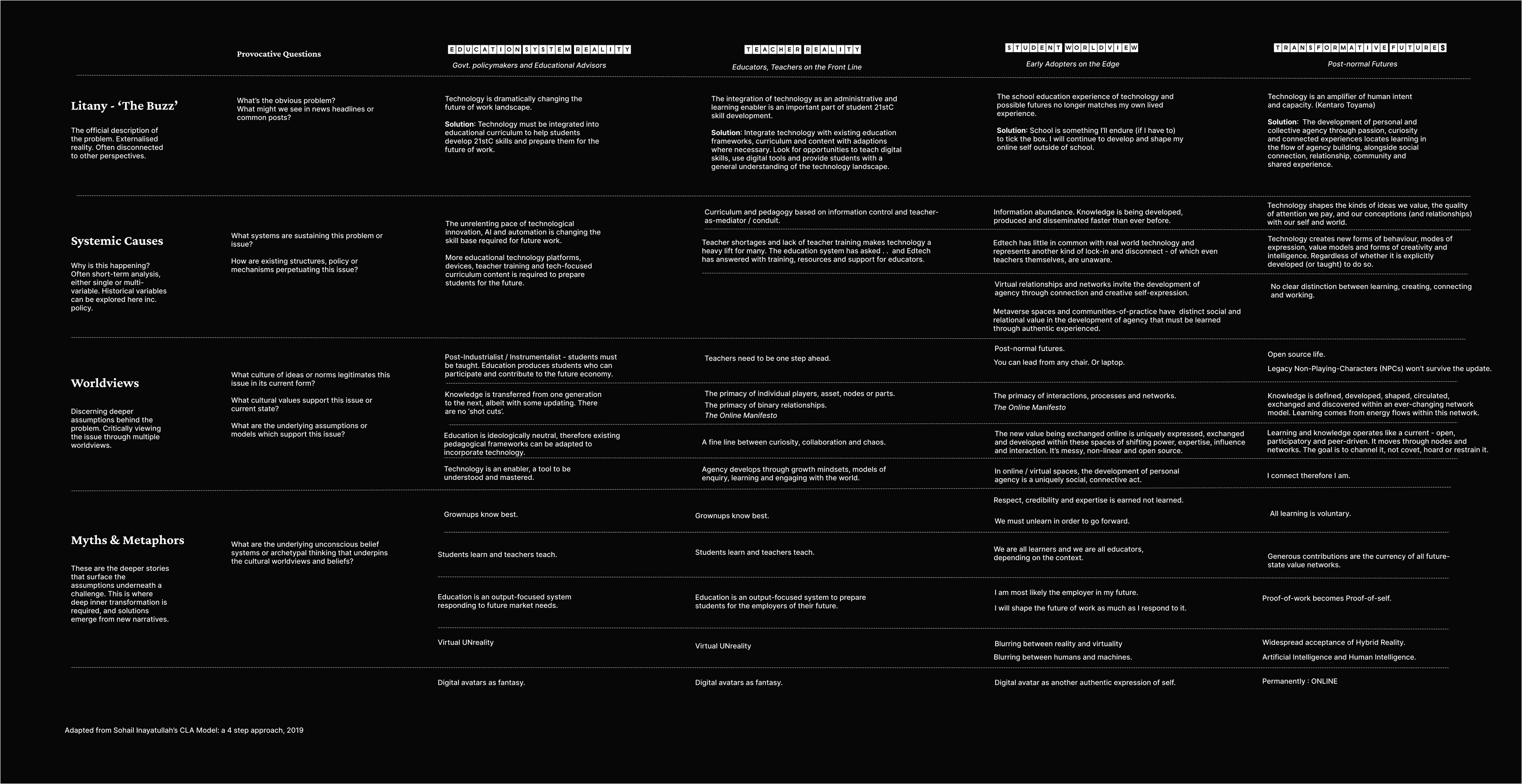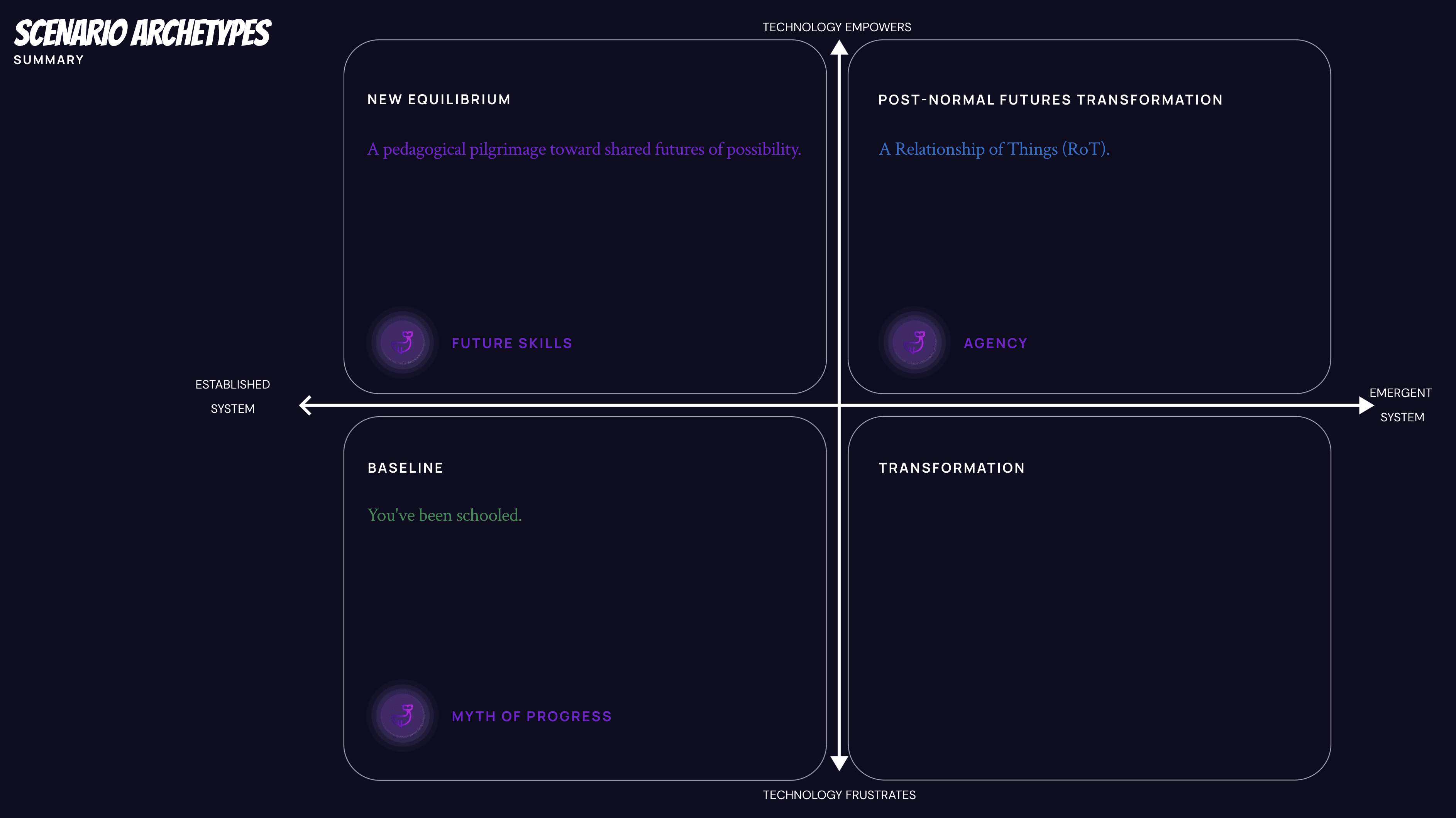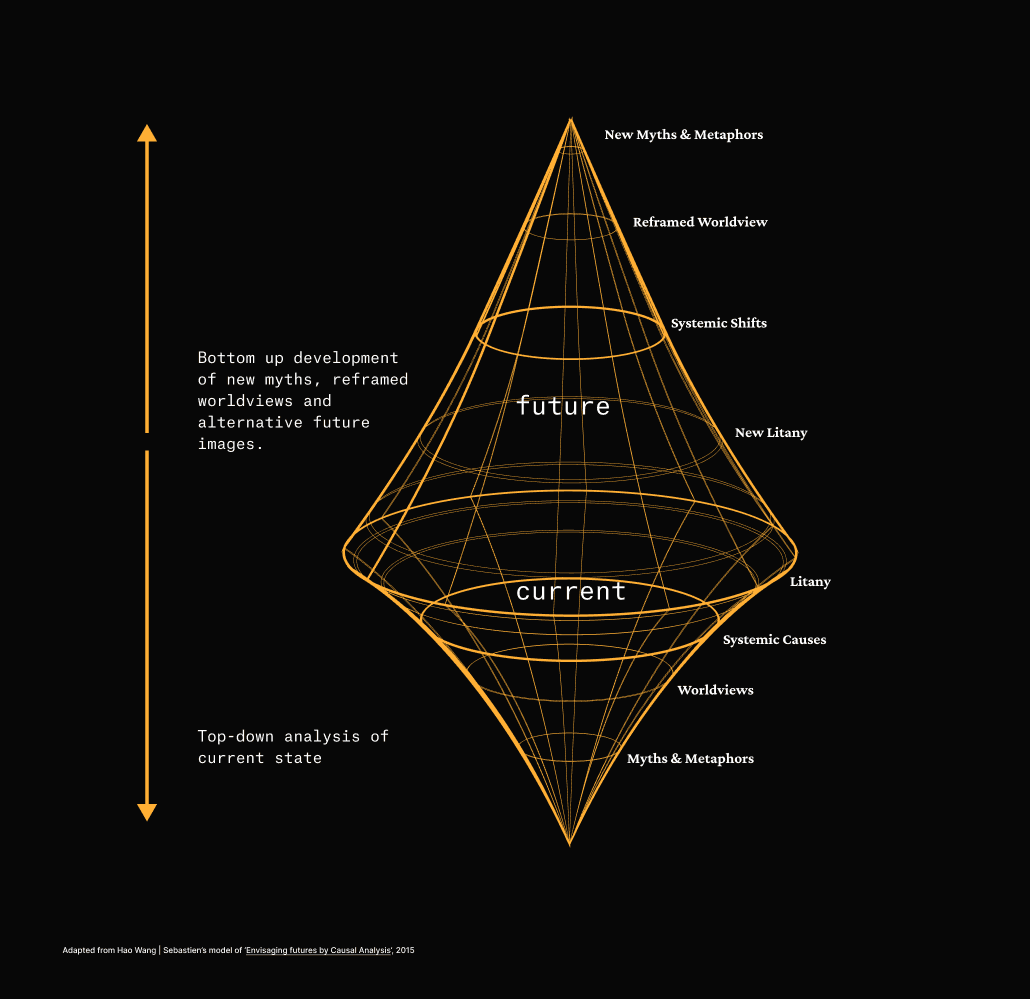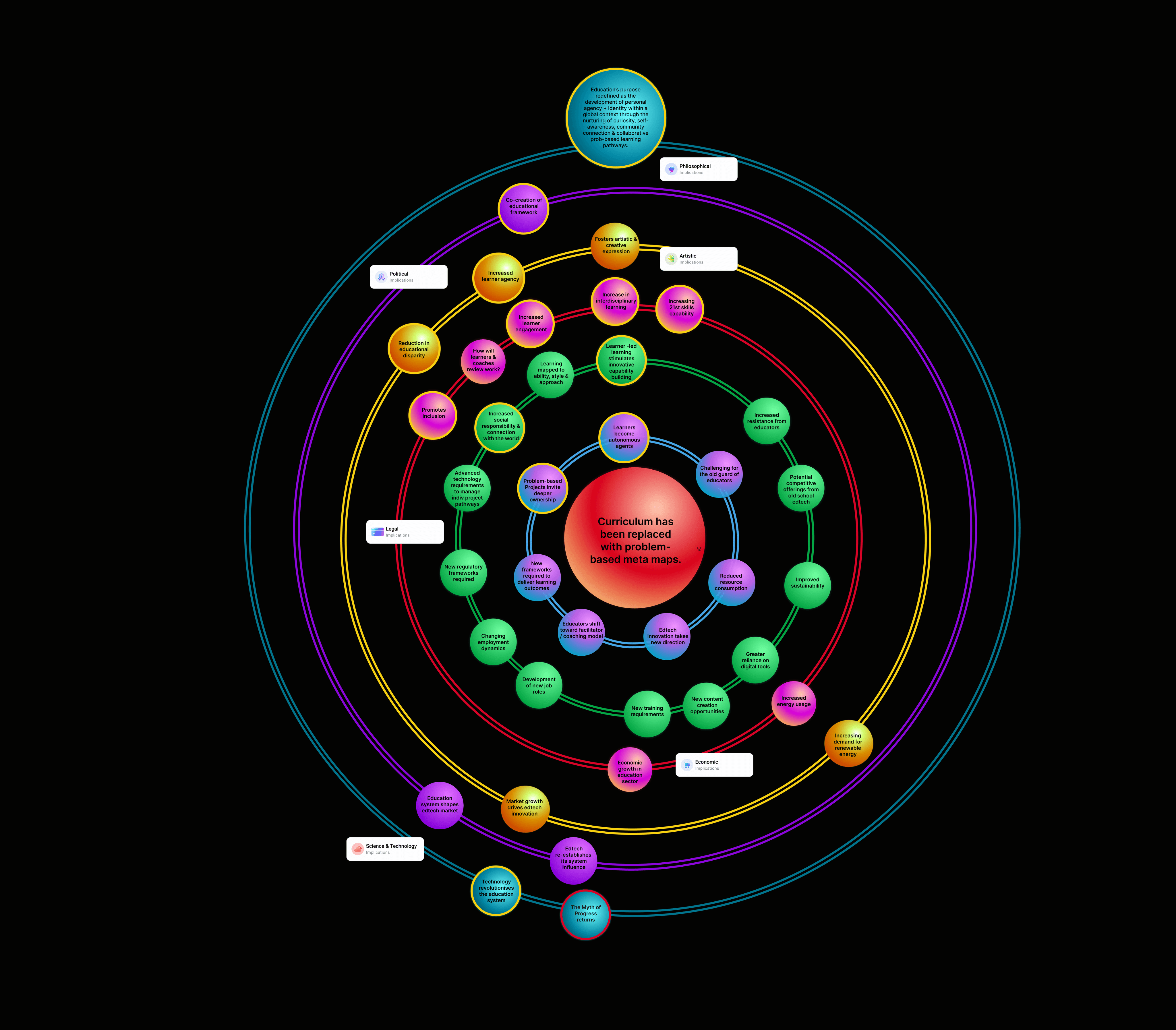Causal Layered Analysis
CLA enables us to explore deeper contextual structures of knowledge & meaning within the domain.

Causal layered analysis (CLA) is offered as a new futures research theory and method. As a theory it seeks to integrate empiricist, interpretive, critical and action learning modes of knowing. As a method, its utility is not in predicting the future but in creating transformative spaces for the creation of alternative futures. It is also of use in developing more effective – deeper, inclusive, longer-term futures thinking to support policy development. Causal layered analysis consists of four levels: the litany, social causes, discourse/worldview and myth/metaphor.
Causal Layered Analysis invites us to think down through the layers of understanding, meaning and perception. Past the superficial observable events we might be seeing in the news or observing in the domain discourse. None of these levels should necessarily be prioritised, but rather each level offers its own lens on the domain and with it, its own possible solutions or responses to the project in focus. The challenge is to conduct research that moves up and down these layers of analysis and thus is inclusive of different ways of knowing. CLA begins and ends by questioning the future.
___________________
Source: Sohail Inayatullah in Jerome Glenn and Theodore Gordon, Futures Research Methodology, Version 3.0. Washington D.C, The Millennium Project. 2009. Isbn-978-0-9818941-1-9
Scenario Archetypes
At Houston we use Scenario Archetypes to explore possible futures along a spectrum of change.
Baseline Scenarios assume the domain system continues to move along its current trajectory. This archetype can sometimes represent a Collapse Scenario where the domain system no longer functions effectively under the weight of emerging changes.
New Equilibrium Scenarios represent a new system balance amongst the competing forces that is different from the current balance.
Transformation Scenarios represent futures where the system has been discarded in favour of a new system with new rules, new mechanisms for change and often a changed dynamic in the relationships of actors within the system.


